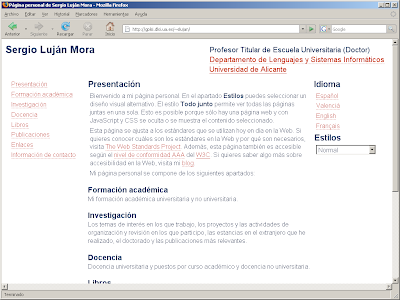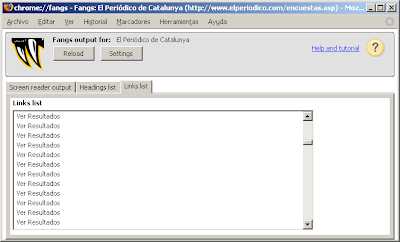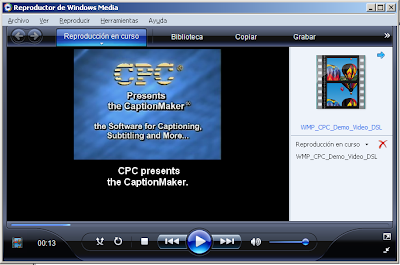que anuncia que IBM juntos con unas universidades norteamericanas está preparando material educativo sobre la accesibilidad web:
You might take using a computer for granted, but for millions of people, it's a challenge. One in five individuals, or over 54 million Americans, has a disability that makes it difficult to see a computer screen or navigate the Web, according to IBM.
Specialized, usually expensive, software and hardware solutions have long existed. And in recent years, certain helpful facilities have been built into mainstream software, like magnification for the visually impaired.
But IBM wants to broaden development for the needs of the disabled at a fundamental teaching level. A recent survey of 200 two and four-year U.S. universities commissioned by the computer giant found that the majority of
faculty do not teach accessibility in the classroom.
Today IBM announced an initiative to give teachers wider access to learning material about assistive technologies. Six university partners have signed on to start and the U.S. Department of Education is also supporting the initiative. IBM is building a worldwide repository of materials it said will enable student developers to make software more accessible to those with disabilities and the aging population.
"To create a truly inclusive society, all forms of information technology need to be more accessible," said Dr. Bonnie Jones of the U.S. Department of Education. "If we can't do this, people with disabilities land on the wrong side of the 'digital divide.' We have to capture the intelligence and imagination of our next generation of IT developers now."
The University of Illinois, California State University at Long Beach, Georgia Tech, University of Toronto and the Rochester Institute of Technology are some of the universities who are already working with IBM to build a repository of repeatable learning materials to incorporate into everyday computer programming classes.
In one example, the University of Illinois recently added an online course out universal Web site design that includes accessibility for people with disabilities.
"What's so exciting to me, and so important, is trying to get ahead of the curve and influence colleges around the world to change the way they teach," said Benjamin Kempner, program director, marketing and strategy for the IBM human ability and accessibility center.
"The result is going to be that IBM, or let's say AT&T, Verizon and other companies, will be able to employ people who understand accessibility, it's not an afterthought. Once you build accessibility into your products, that means giving millions of people, productive, fulfilling work," Kempner told internetnews.com. "It can also mean more Web sites will be created that consumers can access."
Kempner spoke during his attendance at the 2007 Technology & Persons with Disabilities Conference at the California State University at Northridge. IBM awarded prizes to three students who won a contest related to the Open Document Format for interoperability.
Daniel Millington (Capitol College), Chase Pritchett (University of Oklahoma), and Yang Liu (Tsinghua University in China), wrote computer code that checks word processing documents that adhere to the ODF to determine whether they are accessible. The students contributed their code to the open source community via sourceforge.org.
Separately, Kempner mentioned other accessibility projects in which IBM is involved. For example, one software/hardware product IBM co-developed with another firm is designed to help people with tremors better control a computer mouse. Another, ViaScribe, is being used by 15 universities worldwide. Used in conjunction with a microphone, ViaScribe is speech recognition software that course instructors can use to get their spoken words on a computer screen so the deaf and hard of hearing can follow along.
To IBM's surprise, ViaScribe proved valuable to more than those with hearing loss. "We've created a mine-able resource that students can use look up lectures on the Web," said Kempner. "As we develop more of these technologies, there will be a larger societal benefit."
se puede encontrar toda la información.






















